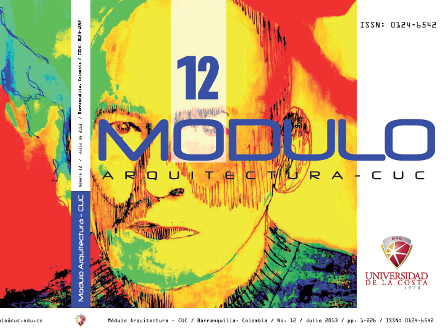La ciudad no es un reloj:
Consideraciones sobre la muerte de la planificación y el propósito de lo 99% invisible
Resumen
Este artículo argumenta en contra del reduccionismo pseudocientífico propuesto por la planificación urbana contemporánea. Establece los parámetros para una nueva práctica de diseño urbano, y plantea un método de intervención similar a las tácticas de abajo hacia arriba propuestas por los artistas conceptuales y por los geógrafos de espacio y lugar.Descargas
Citas
- Da Empoli, G. (2013). Contro gli specialisti: la rivincita dell’umanesimo. Venezia: Marsilio Editori.
- Debord, G. (1969). The society of the spectacle. Sussex: Soul Bay Press, Ltd.
- Highmore, B. (2002). Everyday life and cultural theory. New York: Routledge.
- Hubbard, P. A. (2011). Introduction. In P. A. Hubbard, Key thinkers on space and place (pp. 1-17). Los Angeles: Sage Publications.
- Knabb, K. (2006). Situationist International anthology. Berkeley, California: Bureau of Public Secrets.
- Lefebvre, H. (1991). The production of space. Oxford: Blackwell.
- Merker, B. (2010). Rebar’s absurd tactics in generous urbanism. In J. Hou, Insurgent Public Space: guerrilla urbanism and the remaking of contemporary cities (p. 46). New York: Routledge.
- Taylor, F. (2011). Principles of scientific management. CreateSpace Independent Publishin Platform.
- Weinberger, D. (2012). Too big to know: rethinking knowledge now that the facts aren’t the facts, experts are everywhere, and the smartest person in the room is the room. New York: Basic Books.
Descargas
Publicado
Cómo citar
Número
Sección
Licencia
Derechos de autor 2013 Jaime Correa

Esta obra está bajo una licencia internacional Creative Commons Atribución-NoComercial-SinDerivadas 4.0.
CC Reconocimiento-NoComercial-SinObrasDerivadas 4.0



 English
English
 Español (España)
Español (España)






